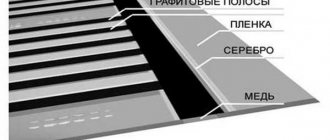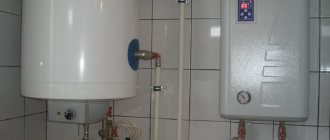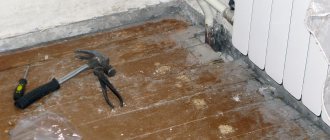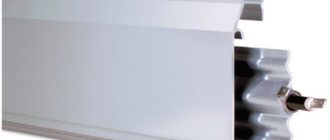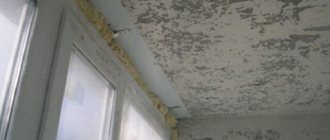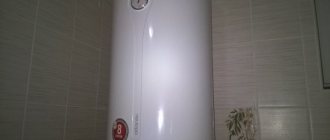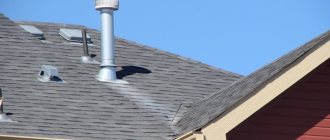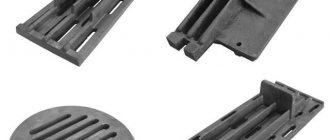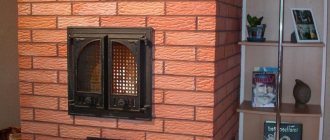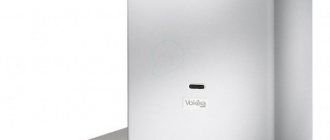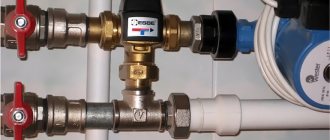What type of device to choose
All manipulations are carried out in stages. Types of electric heated floors can be divided into three groups:
- Thermal mats. It is a mounting grid on the surface of which heating elements are fixed. The cable is used both single-core and two-core. For installation you will need a layer of tile adhesive or screed.
- Resistive. The package includes a heating cable (self-regulating), which is laid on the surface of the rough coating. Placed in a layer of screed.
- Carbon (infrared) floor. It is a thin film on the surface of which heating elements made of carbon are placed (they emit infrared rays). To achieve greater strength, the material is laminated. In this case, there is no need for a screed.
Laying scheme for carpet
Most craftsmen agree and recommend installing infrared film devices. The use is due to a number of advantages:
- high level of fire safety;
- space saving. The height of the room will remain the same, since the height of the mats used does not even reach a centimeter;
- installation work is carried out with your own hands, without involving third parties. If necessary, the material is divided into several fragments, and no screed is needed;
- the device allows you to partially heat the room;
- mats can be used in combination with any type of flooring;
- if necessary, the device is dismantled and placed in another place;
- environmental friendliness. Heat accumulates under the floor. Heat is distributed evenly, but not above human height.
Combination of different types of warm floors and carpet - pros and cons
Carpet is a good thermal insulator, so it is considered that it is not suitable for heating devices, since the heat will be wasted. This is true if you lay thick carpet.
However, today tufted carpet is produced; it is thinner than the standard type, and its properties are similar to laminate or linoleum. Therefore, it is important to choose the right model of carpet (carpet) for a warm floor.
In addition, to reduce heat loss, it is necessary to lay an additional heat insulator in the form of a foil film under the heating elements.
It should be noted that to obtain a temperature on the carpet that is similar in feel to floor tiles, you will need to set the thermostat to 3 to 5 degrees higher.
But it’s worth it, since this floor covering for heated floors has a number of advantages:
- walking on warm, soft carpet is much more pleasant and comfortable;
- it will provide comfortable conditions both when the system is on and off;
- creates excellent sound insulation;
- easy to style;
- has a huge number of models, different colors and pile lengths.
It is impossible not to note the presence of shortcomings:
- Carpet is suitable for rooms where it is dry and clean;
- Requires constant cleaning;
- May cause allergies in susceptible people;
- Such coverage is not appropriate if animals live in the house;
- An excellent thermal insulator is the main disadvantage, but this can be solved if you use the right type of carpet.
Methods of fixing carpet
Before you start laying carpet, you need to choose one of the methods of attaching it to the base, which for this type of covering can be the following:
- fixing the whole canvas with glue and without glue;
- gluing fragments;
- stretching the canvas onto slats with nails using a special tool (stretching), in which the coating is not attached to the base at all, but is held most securely.
Depending on the chosen fastening method, the carpet is also installed. The cloth purchased in the store needs to be spread on the floor of the room so that it is smoothed and leveled for a couple of days at room temperature.
Installation process
You can install infrared structures as follows:
- First of all, you need to prepare a base in the form of a floor slab, which must be covered with a self-leveling mixture.
- Now a layer of shielding thermal insulation (foiling) is prepared, which covers the entire floor.
- Next, you need to lay the heat-generating film itself along the heat insulator. In this case, you need to make a distance from the wall, about 10 cm. Before installing it, you need to install a temperature controller.
- Now you should connect the heat-generating film to the network. For these purposes, a special thermostat is installed on the wall, to which all panels are connected.
- Finally, you need to connect the installed temperature sensor to the thermostat, and then check the functioning of the heating elements.
Upon completion of the installation of the warmest floor, a polyethylene film is laid on it, which will act as waterproofing, and on it - sheets of plywood, where the carpet will be glued.
Stretching tension method
To fix the coating during stretching, you will need to use grippers - slats into which two rows of nails are driven at an angle of 45 degrees. To stretch the material, you will need a special device - a kicker or stretcher. In small rooms you can get by with a knee kicker, but in larger rooms you will need a more powerful tool.
With this method of laying carpet, the following stages can be distinguished:
- Preparing the base.
- Fastening grippers along the walls with the nails oriented from the center of the room.
- Laying the substrate and fastening it through 200 mm with staples.
- The smooth factory edge of the material is laid along the wall.
- The material is attached with a kicker to the gripper: having secured the teeth of the tool about a couple of centimeters from the slats, you need to strike the pillow, which fixes the carpet on the nails.
- The canvas is stretched with a powerful stretcher, starting from the corners.
- Having inserted the teeth of the stretcher into the material approximately 150 mm from the edge, they should be fixed, and then pull the ends onto the grippers using a kicker sequentially in all directions.
- The resulting excess material can be trimmed or simply folded.
- Then install skirting boards around the perimeter of the room.
If you choose the most suitable method of laying carpet for a particular room, then this floor covering will remain comfortable and neat for many years.
When decorating the premises of country houses or city apartments, carpet is increasingly used. This cozy floor covering is very practical, it is a good insulator and is pleasant to walk on even…
» data-url=»https://krutopol.com/kak-pravilno-stelit-kovrolin.html» data-image=»https://krutopol.com/wp-content/uploads/2016/08/kak-pravilno -polozhit-kovrolin2-450×313.jpg" data-title="How to lay carpet on concrete and wood floors. Installation methods using glue, tape, free fixation">
You will be interested in:
How and with what to cut carpet at home? Instructions, tips, videos
When laying carpet, it always has to be cut according to the geometry of the room so that it can lie flat and free on the floor. And this is where the proverb comes in handy...
Finishing the stairs with carpet and carpet overlays. How to choose, cut and secure the material?
In a house where there is a staircase, the question is always how to maintain its attractive appearance and functionality for as long as possible? Carpet can help you with this - with its...
Underlay for carpet on concrete and wood floors: which one is better to choose?
For those who want the flooring in their home to last for a long time without losing its attractive appearance, the solution to the question of whether a carpet underlay is needed is clear. According to experts, the substrate...
Finishing options for heated floors
Having decided which kind of warm floor to use, you need to choose the most suitable finishing coating for it. The most versatile material in this regard is considered to be ceramic tiles, which go well with any type of heated floors.
However, as you know, it cannot be used in all rooms. As an alternative, they usually consider the option of linoleum, which is characterized by low cost and ease of installation. However, this coating does not go as well with warm floors as tiles.
The reasons here are as follows:
- Low thermal conductivity. Because of this, underfloor heating loses much of its effectiveness.
- Weak resistance to heat. Due to prolonged exposure to elevated temperatures, linoleum begins to lose its decorative and performance qualities. This is expressed in changes in color, deformation and swelling of its surface. In addition, phenol fumes that are harmful to human health begin to enter the air.
However, linoleum can be quite successfully combined with heated floors: the main thing is to choose the appropriate type of this material. For example, it is advisable to avoid using thick coatings that provide good protection from the cold. Material that is too thin is also not suitable due to its poor wear resistance. In addition, all the unevenness of the base quickly appears through its surface.
Modern types of linoleum are usually marked with appropriate symbols, indicating the possibility or prohibition of use together with heated floors. The so-called. has suitable properties for such combinations. “natural” linoleum, the production of which uses natural components that do not contain harmful substances. As for “unnatural” materials, their use is also allowed: the main thing is to observe the optimal temperature regime in this case. Warm floors usually have an operating temperature in the range of 25-28 degrees: if this is not exceeded, then there will be no danger for heating the floor under linoleum.
Installation of infrared heated floors
Such structures can be installed independently. To do this, just study the step-by-step instructions supplied by the manufacturer. But first you need to purchase the necessary components, such as:
- thermostat sensor;
- additional set of wires;
- a set of infrared film, which is sold in rolls;
- To avoid possible heat loss, you will need material for a thermal insulation gasket.
Step-by-step installation scheme (including on a wooden floor):
- First, the surface to be used is prepared. Old material (if necessary), construction and other debris is removed. Severe irregularities are eliminated. It is necessary to level the surface if the level of difference exceeds several millimeters per meter of surface.
- It is recommended to use a thermal insulation layer to minimize heat losses. A non-conductive material should be used (this will improve overall safety). Construction tape is used to fasten sheets of material.
- Warm flooring is installed under the carpet. The entire surface of the room is covered with mats, with the exception of areas where furniture will be located.
- Connecting the device. To do this, connect a thermostat, which is recommended to be mounted on the wall, half a meter from the floor. Wiring is laid, the connection to which is made in parallel. This entire layer is well insulated using sealants.
- The thermostat can be installed in several ways (external and internal). You can groove the area from the floor surface to the place where it is to be installed. If the renovation of the room has already been completed, you can use a plastic box in which all the wires are conveniently placed. The sensor is mounted under the film in a small recess. After connection, the device undergoes a performance check. A working system should heat the surface in five minutes. Grounding plays an important role, so all ends of the film should be taped with special tape, which is then attached to the wire.
- Installation of the insulating layer. When using carpet, a top layer of insulation is mandatory. For this, plywood is used, which can protect infrared mats from any mechanical damage, and the carpet from overheating.
- Carpet installation. Before this, the material is rolled out throughout the room and left completely undisturbed for the day. During this time, the material will straighten on its own. Adhesive tape is used for fixation. You can only walk around the room the next day.
Expert advice
Installation of infrared film under carpet
An electric or innovative infrared floor can be selected to be installed under a carpet that is comfortable for tactile sensations - the solution to this problem depends on their characteristics and the conditions in which the installation will be carried out.
If we take the criterion of ease of installation as a basis, then preference is given to infrared film floors, which can be installed within two to three days, including the day required for the carpet laid out after transportation to straighten out. He doesn't need a screed.
For temporary conditions, mobile options for heated floors are selected. Electric flooring under carpet is practically not recommended due to the possibility of its deformation in case of possible overheating.
Room measurements and foundation preparation
Before laying the carpet correctly, you need to study the geometry of the floor: take into account all the protrusions, niches, openings and other details when cutting. All room dimensions and details are drawn on a sketch, which should be presented to the seller in the store. It will be easier for you to calculate the amount of material from it in accordance with the width of the available rolls. When choosing a particular material, you need to take into account the geometry of the room and the compatibility of standard roll sizes with the size of the room.
Before laying the covering you must:
- mark on the canvas the places of cutouts for partitions, etc.;
- add 5 cm to the total dimensions so that in case of any adjustment to the position of the piece, it will have a margin.
When installing heated floors, you must strictly follow safety precautions:
- all work on installing thermostats must be carried out with the power supply voltage turned off;
- It is prohibited to turn on the heated floor until the contacts and cutting lines are completely insulated;
- You should not set the floor heating thermostat to values above 30 degrees.
During the installation of thermal film, it is also necessary to ensure that the heating strips do not overlap each other: overlapping heating elements leads to their local overheating and failure.
Free way.
This method of flooring is considered the most economical, as it is carried out using improvised means. It has two varieties, distinguished by the method of fixation:
- Along the perimeter. This mounting option is the simplest, because the carpet is attached using a plinth. To begin with, the material is spread around the entire perimeter of the room. A prerequisite is an allowance on each side, which should be about 15 cm. The carpet is leveled from the center to the edges. This process can be carried out either with a special roller or by hand. Only after careful smoothing is the excess material cut off, and the remaining carpet is secured with skirting boards around the perimeter. In the doorway it is most often secured with a metal strip or threshold.
The advantages of this installation:
- The material can be easily dismantled if necessary and re-attached.
- The entire flooring process does not require the help of professionals, which saves a lot of money.
- No additional equipment or materials are required for fastening.
- It is not necessary to prepare the floor before starting work.
- After a long period of use, wrinkles or bubbles may form on the surface.
- This fixation method is not suitable if the room has mobile furniture equipped with roller wheels.
- Rearranging furniture may be more problematic as the covering may move.
- Careful care of the carpet will be required, since the use of washing vacuum cleaners is not recommended.
- The material should be monolithic, and the room should not be too large.
Water floor
The basis for a warm water floor is a pipeline located under the floor covering, through which heated water circulates. It is laid in the concrete screed of the living space, which warms up and warms the overlying layers. The temperature on the surface of the water floor is 30-35℃. A similar solution is acceptable for a private residential building, because It is prohibited to connect such a heating system to communal heating radiators. Installation of heating elements requires significant financial costs. The water heating method is not used in standard city apartments due to the risk of flooding the underlying floors in the event of an emergency. It is not advisable to lay carpet on a water-type heated floor because to obtain a given degree of heat you will have to increase the overall heating temperature, which will negatively affect the quality of the coating and the safety of the room.
